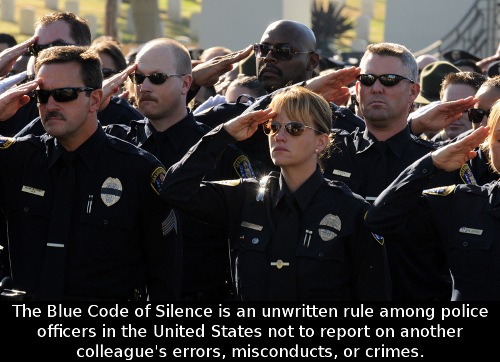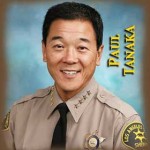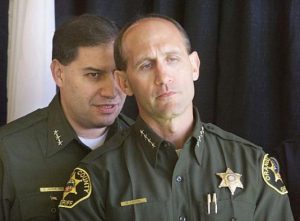
Jerry L. Steering, Esq., is a Police Misconduct Attorney, who defends criminal cases, and sues police officers for, among other things, the use of excessive force upon civilians (otherwise known as police brutality.) His law practice involves serving, among other places, San Bernardino County, and the San Bernardino County cities shown below; especially Victorville and Apple Valley; the two “hot spots” for outrageous police misconduct. Although the Victor Valley is not nearly as heavily populated as other areas in Southern California, the “crime rate” of crimes and Constitutional Torts committed by the San Bernardino County Sheriff’s Department is astounding. It seems that the Victor Valley is the hotbed for “cops gone wild.” These deputies in the High Desert are simply out of control, and nobody is going to do anything about; at least anybody from the Sheriff’s Department, or the Judges of the Victorville Court. These deputies “up the hill” have even been caught by a News Helicopter, beating-up a man who tried to elude them on horseback. The deputies knew that there was a Sheriff’s Department helicopter above, them, and knew that those pilots and crew would never “rat them out”. So, the beat the man who was trying to surrender to them after he had been tased. See, “Sheriff Orders Immediate Internal Investigation Into Arrest Seen on “Disturbing” Video”.
Mr. Steering also represents persons in both civil and criminal case in Los Angeles County, San Diego County, Riverside County and Orange County. He is an expert in brutality / excessive force and false arrest cases; both civil and criminal. Mr. Steering has successfully sued San Bernardino County police agencies successfully, for many years now. Here are a few examples of cases that Mr. Steering has won against the San Bernardino County Sheriff Department; an agency that has literally gone off of the deep end in the High Desert / Victor Valley area:
Morgan v. County of San Bernardino, U.S. Dist. Court, Cent. Dist. of Cal. (Riverside) (1996), $714,000.00 settlement following jury verdict for excessive force and false arrest during search warrant execution in Apple Valley, California;
Austin v. County of San Bernardino, U.S. District Court, Central District of California, $500,000.00 jury verdict for false arrest and excessive force;
Lopez v. County of San Bernardino, U.S. Dist. Court Cent. Dist. of Cal. (Riverside) (2002), $50,000.00 settlement for racially motivated battery;
Miller v. City of San Bernardino, et al, U.S. Dist. Court Cent. Dist. of Cal. (Riverside) (2003), $35,000.00 settlement for unlawful detention;
Calderon v. County of San Bernardino, U.S. Dist. Court, Central Dist. of Cal. (Riverside)(2003), $115,000.00 settlement for false arrest and illegal search;
Arroyo v. City of San Bernardino, U.S. Dist. Court, Central Dist. of Cal. (Riverside)(2004), $125,000.00 settlement for unreasonable seizure of person;
Ford v. County of San Bernardino, (2007), $80,000.00 settlement for excessive force;
In re Jane Doe v. County of San Bernardino, et al., (2008), $290,000.00 settlement (prior to filing lawsuit) for sexually motivated mistreatment of arrestee; and
Aubry v. County of San Bernardino, et. al, U.S. Dist. Court (LA) 2012, $325,000.00 settlement for the use of unreasonable force and for false arrest.
Penny Trent v. County of San Bernardino, et al.,U.S. Dist. Court (LA) 2012, $600,000.00 settlement for unreasonable force, false arrest and unlawful search of residence.
LEGAL EDUCATION AND PUBLICATIONS.

Having attended the University of Georgia School of Law (J.D. 1984), and having taken and passed the February 1984 Georgia Bar Exam in his last semester of Law School (while Clerking at a law firm full time and attending law school full time), in June of 1984 Mr. Steering began defending criminal cases for the law firm of Scott & Quarterman, of Athens, Georgia; the same law firm that he clerked for, full-time, for.
Since 1984 (in California since 1986) he has tried and litigated hundreds of criminal cases, including murder cases, manslaughter cases, assault and battery cases, towing industry related auto-theft / extortion cases (i.e. drop fees), drug possession / drug manufacturing cases, vehicular homicide cases, white-collar investor fraud cases, sex-offender or drug addict registration cases, violations of court order cases, domestic violence cases, towing industry cases, and the entire spectrum of various criminal violations.
 quandary of federal evidentiary law: the disparity in the use of “accomplice accusations” between Fourth Amendment scrutiny of “accomplice accusations” (i.e. typically deemed “reliable” enough to obtain search warrant or arrest warrant), and Sixth Amendment scrutiny of the very same statement (i.e. accomplice accusation generally held inherently unreliable for “Sixth Amendment Confrontation Clause” purposes. In fact, these statements have been held to be so inherently unreliable that Congress could not even have meant to have included them with the ambit of the Declaration Against Penal Interest exception to the hearsay rule [804(b)(3)].) See, “The Application Of Sixth Amendment Tests For The Reliability Of Hearsay Evidence To Probable Cause Determinations, Steering and Ponsoldt, 16 Rutgers Law Journal 869 (1985).
quandary of federal evidentiary law: the disparity in the use of “accomplice accusations” between Fourth Amendment scrutiny of “accomplice accusations” (i.e. typically deemed “reliable” enough to obtain search warrant or arrest warrant), and Sixth Amendment scrutiny of the very same statement (i.e. accomplice accusation generally held inherently unreliable for “Sixth Amendment Confrontation Clause” purposes. In fact, these statements have been held to be so inherently unreliable that Congress could not even have meant to have included them with the ambit of the Declaration Against Penal Interest exception to the hearsay rule [804(b)(3)].) See, “The Application Of Sixth Amendment Tests For The Reliability Of Hearsay Evidence To Probable Cause Determinations, Steering and Ponsoldt, 16 Rutgers Law Journal 869 (1985).NOTABLE CRIMINAL CASES IN SAN BERNARDINO COUNTY SUPERIOR COURT, THAT MR. STEERING TURNED AROUND INTO CIVIL CASES.

Penny Trent v. County of San Bernardino, et al.
On June 3, 2012, at approximately 3:30 p.m. San Bernardino County Sheriff’s Department Deputy Sheriffs Carolyn Chadwell and Kirsten Mitchell answered a call for service of a husband beating his wife at their home at 12486 Kiowa, Apple Valley, California [1]. The deputies received no response to their knocking on the Penny and Wayne Trent’s door, so they entered the house and found Penny Trent and her husband partially undressed in the bathroom [2]. Rather than leave the residence once the welfare of the residents was confirmed, Deputies Chadwell and Mitchell interrogated them about the call for service (i.e. the domestic violence call.) After discussing the incident with Penny and Wayne Trent, the Deputies decided to arrest Mr. Trent for felony corporal injury on a spouse (Penal Code Section 273.5), handcuffed him and put him in their patrol car.
When the deputies took Mr. Trent out to the patrol car to go to jail, they told Penny Trent to have a seat in the living wait in the living room, and they’d be right back. Deputies Chadwell and Mitchell placed Mr. Trent into the patrol car, and Deputy Chadwell returned to the residence with a Marsy’s Victim’s Card [3]; the brochure that is given to Domestic Violence victims [4] by police officers.
When Deputy Chadwell returned to the door of the home with the Marsy’s Card for Mrs. Trent, she saw

Penny Trent sitting on her living room couch. The couch appears at an angle to the front door area (See below, photo of view of couch from front door.) Deputy Chadwell apparently could not see one of Penny Trent’s lower arms when she saw her and stated to her: “Penny; where’s your other arm.” In literally less than one second after asking that question, Deputy Chadwell shot Penny Trent twice in her left leg. Although the bullets grazed her leg, Penny Trent was horrified from being shot, and at a complete loss as to why Deputy Chadwell would shoot her. This is all audio recorded [5]; a copy of the audio shown below.
Deputy Chadwell claimed that she shot Penny Trent because when she reentered the Trent residence, she saw Penny Trent with a blank stare on her face and said that Mrs. Trent’s hand was under a couch pillow. Mrs. Trent’s hand was just resting on the pillow on the couch, but from the front doorway area, Deputy Chadwell could only see her right hand. Deputy Chadwell didn’t give Mrs. Trent a chance to respond to her question, or to show her left arm. She just shot her within one second of asking her where her left arm was. Neighbor witnesses told the Sheriff’s Department that Deputy Chadwell then broke-down and cried about having shot Mrs. Trent.
Immediately after Deputy Chadwell shot Mrs. Trent, Deputies Chadwell and Mitchell ordered Penny Trent to exit her residence, and when she did, the deputies threw her to the ground on the rock front lawn, handcuffed her and placed her into their patrol car; imprisoning her there.
Audio recording by Deputy Chadwell of the June 3, 2012 shooting incident (the shooting takes place at 17 min. 02 sec. of the audio recording.)
Click here to view entire SBSD Officer-Involved-Shooting Investigation Report of Penny Trent Shooting
Thereafter, several Sheriff’s Department supervisors and other officers came to the Trent residence and decided what to do with Mrs. Trent [6]. After discussing the shooting of Mrs. Trent with each other, the Sheriff’s Department then conspired to take Penny Trent to the Apple Valley Station, so they could interrogate her in a coercive manner [7]; to try to get her to say something to try to justify their shooting of her [8] (she never did.) It’s a federal crime and federal constitutional violation to take a person to the police station for questioning, without probable cause to arrest them (Hayes v. Florida, 470 U.S. 811 (1985)). That’s just what they did to Penny Trent, and it’s shown on the recording shown below.
Notwithstanding Mrs. Trent’s repeated requests to leave the station, the Sheriff’s Department investigators kept Penny Trent at the station. They even created police reports showing that a crime had occurred (i.e. Cal. Penal Code § 245; assault with a deadly weapon), that Penny Trent was the “suspect” of the shooting, and that Deputy Chadwell was the “victim”. The geniuses at the Sheriff’s Department did a gunshot residue test on Penny Trent, even though she was the one shot. Even worse, the investigators at the Apple Valley station made Penny Trent undress down to her underwear, to take photos of any marks or bruises on her; supposedly for the criminal case against Mr. Trent.
Moreover, to add insult to injury, the Sheriff’s Department (Investigator Robert Thacker) unlawfully obtained a search warrant for the search of Penny Trent’s house, and used the bogus pretense of a criminal investigation, to perform their civil liability investigation. This was the Sheriff’s Department’s only chance to inspect the premises, as police officials cannot obtain a search warrant to do civil liability investigation; only to investigate crimes. Therefore, the Sheriff’s Department had to misrepresent the purpose of their application for a search warrant to Judge Stanford Reichert; claiming that their search would reveal evidence of a crime (the only crime really being Chadwell’s shooting of Penny Trent.)
Eventually, in the early morning hours of June 3, 2012, the Sheriff’s Department drove Mrs. Trent home after they were done with their illegal search of her residence.
Although ever since O.J. Simpson decapitated his wife “Domestic Violence” seems to be the worst crime that one can commit, because the Sheriff’s Department shot the domestic violence victim (Penny Trent), when they took Mr. Trent to the hospital that same evening, they posted no guard in / at his hospital room, and actually let him “escape.” To date, no criminal charges have been filed against Mr. Trent, because the Sheriff’s Department can’t prosecute Mr. Trent without publically implicating themselves in shooting the very victim of that crime.
None of this is surprising, save the actual shooting itself. Police agencies typically arrest the victims of their outrages, and in the coercive atmosphere of custodial interrogation, attempt, and often succeed, in getting their victims to make statements against their interest; statements that “spin” the facts or otherwise somehow shift all or part of the blame to the citizen – victim. This is normal, notwithstanding it being obvious to any peace officer that it’s unlawful to take someone to the police station for questioning in the absence of probable cause for their arrest. See, Hayes v. Florida, 470 U.S. 811 (1985.) The ends that the San Bernardino County Sheriff’s Department will go to, to protect themselves from civil liability is incredible.
Moreover, although the Sheriff’s Department just couldn’t keep themselves from illegally taking Penny Trent to the police station in handcuffs (i.e. false arrest, kidnapping civil rights criminal violations), because they screwed up and shot the victim that they were there to save, they need to get a coerced and skewed statement of what happened. They need to get Penny Trent to the station there and now, even though they had no right to have done so, because the coercive environment of police interrogation, allows the cops to shape the story, and to get you to agree with statements that are not true and that are against your interest, because after that moment in time, you are going to not be so vulnerable, and will likely have a lawyer.
Notwithstanding all of that, the Sheriff’s Department didn’t get an actual formal statement from Deputy Chadwell, until five days after her attempt to kill Penny Trent; an audio copy of her interview being below and playable. Case Result: $600,000.00.
People of the State of California v. Jonathan Osborne; Rancho-Cucamonga San Bernardino County Superior Court criminal action for violation of Cal. Penal Code § 148(a)(1) (resisting / obstructing / delaying peace officer.) Jonathan Osborne’s mother had ordered a suicide kit from a lady in San Diego, who the FBI had raided for selling the kits. The FBI found an unfilled order for the kit, so the feds called the Upland (California) Police Department to check on the welfare of the parents at the Osborne home. When the Upland Police Department showed-up at the Osborne home, the only person there was Jonathan Osborne; one of the Osborne’s sons. The police demanded entry into the home and arrested (and beat-up) Jonathan Osborne, for refusing to consent to the police officers’ demand to make a warrantless entry into the Osborne home. Notwithstanding the fact that a 1974 California Supreme Court case (People v. Wetzel, 11 Cal.3d 104 (1974)) held that it is never a crime to stand in one’s doorway and to refuse their consent to a warrantless search of one’s home, the Crimes Against Peace Officers Unit of the San Bernardino County District Attorney’s Office refused to dismiss the case, because they have an express policy of never dismissing cases alleging a police officer victim. Moreover, the Upland Police Department destroyed an exculpatory audio recording of the incident that was recorded by the main Upland Police Department officer. Result: Case settled on appeal by defendants for confidential sum.
People of the State of California v. James Lemoine; Rancho-Cucamonga San Bernardino County Superior Court criminal action for felony assault on a peace officer and felony interference with public officer’s performance of duties. An Ontario Police Officer located Mr. Lemoine in a neighbor’s home after incident with his girlfriend, resulting in her called police on him. Mr. Lemoine attempted to flea the officer and attempted to jump through window of home to escape. Mr. Lemoine got stuck in the window sill assembly, and was shot in the back by the Ontario Police Department officer while in that position. He posed no threat to the officer, who was exonerated of wrongdoing by Ontario PD (“What’s wrong with shooting an unarmed man, stuck in a window frame, cut-up, with one leg outside and one leg inside?”) The officer claimed that Mr. Lemoine attacked him in an effort to escape; a complete fabrication; something actually quite normal for peace officers. However, the only people who get to sit on juries in police misconduct cases, civil or criminal, have not personally witnessed police misconduct (all that have seem to always tell the court during jury selection, that the event of police misconduct that they witnessed had such a profoundly negative opinion and general distrust of, if not contempt for, peace officers, that they are actually prejudiced against peace officers in these type cases, and are, therefore, excused to sit for cause as a juror.) Therefore, the only people who are asked to judge who is lying; the defendant or the Constable, are people who believe that police don’t do bad things to people who didn’t deserve it; morally, if not legally, because they have only had positive experiences with peace officers. That’s why it’s so difficult to win in these officer vs. civilian swearing contests; notwithstanding the Constable repeatedly lying on the stand. However, it can be done, and it was done here. Hon. Ben T. Kayashima, Judge Presiding: Jury Verdict: Not Guilty all Counts.
People of the State of California v. Tom Austin; Rancho-Cucamonga San Bernardino County Superior Court criminal action for resisting / obstructing / delaying peace officer. Mr. Austin’s 16 year old son and his classmates were video recording a reenactment of the famous Sacco an Vanzetti armed robbery incident (that Sacco and Vanzetti were innocent of, but executed for), for a High School History project. The boys wore black ski masks and carried pellet guns, and had dressed-up the Austin’s garage to resemble a bank teller window counter. Some neighbors saw the youths and (notwithstanding a youth recording the reenactment with a tripod mounted video camera outside of the garage) thought that the youths were home invasion robbers, and called the police.
The youths were detained downstairs in the garage, and when Mr. Austin heard screaming (the police screaming orders to the youths) he walked downstairs to tell the youths to be quiet (to not to disturb the neighbors), and when he reached the bottom of the stairs and turned a blind corner, he saw the barrel of a policeman’s pistol pointing directly at and in front of his face. The officer ordered Mr. Austin to turn around, and when he asked the officer (who was now standing inside of Mr. Austin’s home) what was going on, the officer pepper-sprayed him in his face, handcuffed him and took him to jail. The Ontario Police officers concocted the story that Mr. Austin lunged for the officer’s gun, and that’s why he pepper-sprayed him. Mr. Steering found that a recording of the immediate post pepper-spraying activities, had been altered to conceal the true contents of the discussion between Mr. Austin and the officers. Hon. Gerard S. Brown, Judge Presiding: Result: Jury Verdict: Not Guilty (Mr. Steering later obtained a $500,000.00 jury verdict in favor of Mr. Austin, against the arresting officers, as shown below.)
People of the State of California v. Milt Holland; Rancho-Cucamonga San Bernardino County Superior Court criminal action for resisting / obstructing / delaying peace officer. Mr. Holland leased the old CHP office building in Ontario, to work on prototype bus control computer system. Ontario Code Enforcement wanted to check the building to see if Mr. Holland also was residing in the same. The area was only zoned for commercial occupancy; not residential. Ontario Code Enforcement officers, along with Ontario Police Officers, approached the chained-closed padlocked rear entry entry gate of the premises, and saw Mr. Holland behind the gate; elevated; standing in a construction trailer. The officers ordered Mr. Holland to open the gate, and Mr. Holland simply walked away from the locked gate, and into the building. The officers used the “master key” (i.e. bolt cutters) to enter the yard, and arrested Mr. Holland and took him to jail for violation of Cal. Penal Code § 148(a)(1); resisting / obstructing / delaying a peace officer in the performance of their duties; the catch-all crime that the police use when they don’t actually have any grounds to arrest a civilian, since Section 148(a)(1) is so nebulous and ambiguous, it could be, and many many times has been, construed as meaning just about anything, and is used to arrest people who “fail the attitude test”) Click on tab, above on “Criminal Attorney – Contempt of Cop Resistance Cases”, for a more developed analysis of police misuse of Section 148(a)(1.)
After Mr. Holland had gone through four criminal defense lawyers, who told him to plead guilty to misdemeanor delaying / obstructing an officer (Section 148(a)(1), for not opening the gate), Mr. Holland retained Mr. Steering, who look one look at the Ontario PD report and immediately knew that even on the face of the Police Report, that there was no crime committed by Mr. Holland. On the day set for trial, Mr. Steering asked Judge Dennis G. Cole to dismiss the case on the ground that if everything that the police were contending in their reports was true, it nonetheless is never a crime to refuse an officer’s demand to search a place, thing or person, in the absence of a search warrant. If reading Mr. Steering legal authorities to support that proposition of law (See v. City of Seattle, 387 U.S. 541 (1967) and Camara v. Municipal Court, 387 U.S. 523 (1967) (both holding that the state can’t criminalize a mere refusal to consent to warrantless entry), Judge Cole told the District Attorney’s Office that his “case was in the toilet”. Result: Case Dismissed pursuant to Mr. Steering’s invitation to the Court, to dismiss the case on its own motion, in the interest of justice (Cal. Penal Code § 1385.)
JANE and JOHN DOE v. County of San Bernardino, U.S. Dist. Court Cent. Dist. of Cal. [Riverside] (2000); $50,000.00.
Deputy Sheriff Attempts To Frame Husband And Hide Romance Wife, By Hiding The Drugs Found On Her From The DA’s Office:
In this case, Mr. Steering obtained $50,000.00 from the County of San Bernardino, for a criminal defendant’s claim against the San Bernardino County Sheriff’s Department, for planting evidence of drug manufacturing, during the deputy’s unlawful search of a probationer’s residence; notwithstanding probation Bravo search terms. While in the process of planting evidence, the deputy sheriff actually discovered even better evidence of the very crime that the deputy sheriff was attempting to frame the defendant for. It’s like framing the guilty. That way, the police don’t need to bother with obtaining evidence against the persons who they believe are engaged in ongoing criminal enterprises (i.e. manufacturing or selling narcotics); they can just provide the evidence themselves, and save us all of the time and money incurred and expended, in investigating and obtaining competent and admissible evidence of criminal conduct that will stand-up in court.
When a San Bernardino County Probation Officer and Sheriff’s Department Investigator did a probation search of JOHN DOE’s residence (the “husband” was on felony drug possession probation), they saw all sorts of pornographic photos, exotic clothing and sex toys in the home, and became immediately infatuated with the beautiful occupant of the residence; JANE DOE; the cohabitant girlfriend. The Sheriff’s Department Investigator arrested JANE DOE for narcotics possession, and took her to jail; stopping on the way to jail to show-off his “catch.” Although her bail was $500,000.00, the Investigator got it reduced to release on her own recognizance (something unheard of in San Bernardino County), to attempt to date her.
The Investigator broke back into the DOE residence after arresting JANE DOE, as he had seen a VHS video at the home earlier marked: “XXXX.” When the Investigator then played that video at the DOE residence, he not only watched JOHN and JANE DOE having all sorts of sex, but also saw a recording of JOHN DOE cooking meth. However, there was no meth manufacturing chemicals or equipment at the house. So, in an effort to frame the guilty, the Investigator planted meth “cooking” equipment in the residence, and he and the Probation officer staked-out the house for several days, until JOHN DOE showed back-up at his home. When JOHN DOE entered the house, he was immediately arrested for meth manufacturing, based on the items planted by the Investigator, who wanted to put JOHN DOE in prison, to free-up JANE DOE for dating.
Mr. Steering was able to obtain $50,000.00 for the defendant from the County for the Investigator’s actions, and Mr. Steering was able to negotiate a 10 year sentence for JOHN DOE, rather than the 25 years to life sentence for a third strike drug manufacturing.
POLICE BRUTALITY, FALSE ARRESTS AND MALICIOUS CRIMINAL PROSECUTIONS.
Wrongful police beatings, accompanied by their sister “false arrests”, are a common and every day occurrence. These beating / arrests are no longer limited to persons of color. Soccer Moms, airline pilots and school teachers, beware: because of the great (and ever expanding) powers being given to police officers by the Supreme Court, described below, in a very real way, you no longer have the right to question, protest or challenge police actions, since to do so usually results in your being physically abused and falsely arrested on trumped of charges of essentially, “Contempt Of Cop”; (i.e. maybe not getting on the ground fast enough, or failing to walk-over to the officer fast enough; some type of failing the attitude test.) These beatings of innocent by police officers is rampant and condoned and defended by the command structure of most, if not all, modern police agencies. See, Orange County Sheriff’s Department police torture videos, and other police beating videos throughout the Country. There is a “Blue Code of Silence” between and among peace officers throughout the nation, and everyone knows this. This is no startling revelation. The County of Los Angeles has itself released a public document, acknowledging the existence of, and actually condemning, the Sheriff’s Department’s own rogue gangs of sadistic jailers at the Los Angeles County Central Men’s Jail. See, The Citizens Commission on Jail Violence September 28, 2012.
IN CALIFORNIA, A POLICE OFFICER CAN BEAT-UP OR MURDER ANYONE THAT THEY WANT TO, ANY TIME THAT THEY WANT TO, WHILE ON-DUTY.
The use of unreasonable and unlawful force in America is so rampant, that in these modern times, at least in California, a police officer can murder anyone that they want to, any time that they want to. Juries are very reluctant to convict police officers for any sort of duty related actions, such as shooting civilians. In 2010, the Los Angeles County Sheriff’s Department Shot 15 Unarmed People To Death – “Perception Shootings”. See p. 56 of the Los Angeles County Sheriff’s Department 30th Semi-Annual Report to the Los Angeles County Board of Supervisors.
All that the police officers need to say is the they were afraid for their lives because their shooting victim had his hands in his pockets, or that his hands were under his body and wouldn’t show them to the officer, or that he was reaching for his waistband area. The modern police line is that if an officer either can’t see your hands or if you reach for you waist or pockets, that it’s okay to shoot the person. This is no joke. None of the shootings of the fifteen unarmed people who were shot to death by the LA Sheriff’s Department in 2010 were found by the department to have violated department policy. Moreover, none of those deputies were criminally prosecuted for those shootings; even when witnesses have come forward and disputed the deputies’ claims as to what happened.
These homicides by police officer aren’t just limited to shootings. For example, on January 13, 2014, an Orange County, California, Superior Court jury acquitted two Fullerton Police Department officers of murdering / using unreasonable force on the mentally-ill son of a former Orange County Sheriff’s Department Deputy Sheriff; Kelly Thomas. The beating death was audio and video recorded, and no reasonable human being could have believed that the beating death was justified. The video recording shows two sadistic police officers, beat Kelly Thomas to death. However, the defense was able to show the jury two prior incidents that made the jury simply not care that Kelly Thomas was wrongfully beat to death; the testimony about his having previous struck his grandfather, and testimony about his mother obtaining a restraining order against him. Remember, this was a mentally ill young man, who had his moments. They were able to do this, because California Evidence Code Section 1103 permits a criminal defendants to show the character of the alleged victim of their crime, to prove that the victim has a certain character, and that the victim acted in conformity with that character during the incident complained of; the one that the criminal defendant is being prosecuted for.
Accordingly, notwithstanding overwhelming evidence that the Fullerton Police Department literally beat Kelly Thomas to death for what seemed to be actual sadistic gratification (i.e. “See these fists. They are going to fuck you up”), a Fullerton training Corporal gets on the witness stand and testifies that he has seen the video and audio recording of the officers beating Kelly Thomas to death and that the actions of the officers are commensurate with their training. Incredibly, the jury get suckered. The police, the lawyers, the judges and the professional police apologists (the “expert witnesses that really can justify literally anything) all know how outrageous Kelly Thomas’s murder was. They are all, however, bound by our system of justice.
The police get to show the sordid life of their victims because of Cal. Evid. Code § 1103(a) allows the criminal defendant to show various traits of the character of the alleged victim to show that the alleged victim acted in conformity with that traits of character during the incident complained of. By the time that the cops are done dehumanizing the dead victim, no one on the jury cares what the officer did to the decedent.
SOUTHERN CALIFORNIA LAW ENFORCEMENT AGENCIES HAVE GOTTEN MORE BRUTAL.
In 2012, a retired Los Angeles County Sheriff’s Department Captain, Bob Olmsted, told the Los Angeles Times, that the L.A. County Men’s Central Jail was, essentially, a torture chamber, run by these rogue jailer gangs of sadistic sociopaths (Minnesota Viking logo tattoos on on their ankles.) Discipline for beatings was not existent, and torturing inmates was actually required for jailer gang initiation. See, “L.A. County sheriff’s official tells of jail brutality”, LA Times, July 7, 2012. See also, “L.A. County jail violence sheriff’s fault, panel says”, LA Times, September 28, 2012. Rival Sheriff’s Department jailer gangs even got into a rumble between the “3000 Boys” (the third floor jailers) and the “2000 Boys” (the second floor jailers) at a Sheriff’s Department Christmas party.
Even as long ago as 1992, the Ninth Circuit Court of Appeals held in a published decision that the “Vikings” gang of Deputy Sheriff’s at the Lynwood Sheriff’s Station, that they were a Neo-Nazi white supremacist gang within the LA County Sheriff’s Department. See, Thomas v. County of Los Angeles, et al., 978 F.2d 504 (1992.)
The leader of the sociopath / sadistic torturing faction of the Los Angeles County Sheriff’s Department, recently retired LA Sheriff’s Department Undersheriff Paul Tanaka, is now running for Sheriff of LA County. Paul Tanaka was a member of the Nazi Sheriff’s Department gang the “Vikings”; who have the Minnesota Vikings logo tattooed on their legs.
Following Captain Bob Olmsted’s revelations to the FBI, the FBI did an undercover investigation at the Los Angeles County Men’s Central Jail. The FBI investigation resulted in the Indictment of 18 Deputy Sheriffs and their Supervisors for torturing inmates and obstructing the FBI’s investigation by hiding prisoners in the county jail population. These 18 Indictments of Los Angeles County Sheriff’s Department personnel resulted in the resignation of L.A. County Sheriff Lee Baca.
Former Undersheriff Paul Tanaka, along with a retired LASD Captain, were indicted on May 13, 2015 by a federal Grand Jury for Obstructing and Conspiring to Obstruct a federal Grand Jury investigation of the rampant torturing of inmates at the Los Angeles County Jail (See, Paul Tanaka Indictment of May 13, 2015.)
That’s not the end of it. Former LASD Deputy Sheriff Noel Womack pleaded guilty in June of 2015 to federal charges of lying to the FBI about systemic LASD torturing and framing of inmates at the Los Angeles County Jails. In 2014, six LASD Deputy Sheriffs were convicted of obstructing the FBI’s investigation of the torturing of prisoners at the Los Angeles County Jails.Lee Baca resigned from office over the scandal at the LA County Men’s Central Jail involving the Indictment of 18 LASD Deputy Sheriffs and their Supervisors for torturing prisoners and obstructing the FBI’s investigation of the same.
On February 10, 2016, Sheriff Baca was Indicted for violation of 18 U.S.C. § 1001(a)(2); lying to the FBI regarding his knowledge of a scheme in the Sheriff’s Department to intimidate an FBI agent who was investigating complaints of beatings of inmates by deputies at the Los Angeles County Jail, and to hide an FBI informant – jail inmate from his FBI handlers. Sheriff Baca was tried on that Indictment, but the jury hung.
Thereafter, on April 6, 2016, former LASD Undersheriff Paul Tanaka was convicted of conspiracy and actual obstruction of an FBI investigation; violation of 18 U.S.C. § 371 (conspiring to obstruct justice) and 18 U.S.C. § 1503(a) (obstructing justice); for not only obstructing an FBI investigation into years of beatings and torturing of inmates at the L.A. County Jail, but also Tanaka and other high ranking Sheriff’s Department officials threatened one of the FBI agents involved in that investigation with arrest for continuing that investigation. In his trial, Tanaka admitted that he still had the Minnesota Vikings Logo tattoo on his leg; a tattoo that he described as a member in a club; the “Vikings”; a tatoo that the federal courts have held is the gang taoo for a “neo-Nazi white supremacists gang within the Los Angeles County Sheriff’s Department. See, Thomas v. County of Los Angeles, 978 F.2d 504 (1992).
Thereafter, on February 10, 2017, former Los Angeles County Sheriff Lee Baca was convicted of similar charges; lying to the FBI and obstruction of the FBI investigation into the systemic beatings and torture of inmates at the Los Angeles County Jail; violation of 18 U.S.C. § 1001(a)(2); lying to the FBI regarding his knowledge of a scheme in the Sheriff’s Department to intimidate an FBI agent who was investigating complaints of beatings of inmates by deputies at the Los Angeles County Jail, and to hide an FBI informant – jail inmate from his FBI handlers.Nonetheless, the body politic tolerates the existence, and the perpetuation of an ongoing unwritten agreement among and between peace officers, to falsely report, and, if necessary, to thereafter conspire with officers who they may not yet even know, to falsely testify, about event(s), if the potential or apparent criminal, administrative and civil liability of a fellow officer is at stake. After all, in the primary category of cases that truly are “false arrests” in the most malevolent sense of the word, “Contempt of Cop cases“, the only reason that there’s an arrest of a civilian at all, is because the police officer has beaten-up / tortured another; usually to self-medicate rather their frail and easily bruise-able egos.
Orange County, California had a Sheriff’s Department that was run by Sheriff Mike Carona, who was released from federal prison in 2015 for witness tampering (instructing witness to lie to Grand Jury.) Until Sheriff Carona went to prison, Orange County was a fantasy assignment for those truly sadistic peace officers, who “get-off” on beating inmates and arrestees. Carona’s Assistant Sheriffs, George Jaramillo and Don Haidl were both criminally prosecuted.
Mike Carona was the former head Orange County Marshall before the Sheriff’s Department took over Court Services, such as bailiffs in the Court rooms. He was never a line / street cop. When Sheriff Carona ran for Sheriff his campaign and political tactics were influenced to commit unlawful acts by the same two Gentlemen who did the same with the 1998 campaign for District Attorney. Gabriel Nassar and Eugene Abbadessa convinced both newly elected Sheriff Carona and newly elected District Attorney Tony Rackauckas both “sold” bages (Carona; Deputy Sheriff’s badges [Reserve]) and “Commissioner” badges (for the Tony Rackauckas Foundation) for a $5,000.00 “constribution”.
Modern police agencies are afraid of losing their “power” in, and over, a community. That “power” base (i.e. ability to influence the politicians and the public), is based in large part, on the public “supporting the police”. That popular support is based upon a belief by the body politic, that: 1) police officers are well trained and know and respect your Constitutional rights, 2) they’re basically honest, 3) that only a small percentage of them would commit perjury, 4) that the force that the police use on people is almost always justified (if not legally, then morally), and 5) that the police are capable of policing themselves. Although none of these beliefs are accurate, one cannot ignore the belief system of the majority of the white / affluent American populace, in understanding why police officers routinely, and without a second thought, falsely arrest civilians, and commit other outrages against innocents.
Unfortunately, because of institutional pressures (i.e. “ratting out fellow officer not a good career move), and the obvious political and practical consequences of not backing-up the their  fellow police officers, the norm in today’s police profession, is for police officers to falsely arrest their “victims”, and to author false police reports to procure the bogus criminal prosecutions (i.e. to literally “frame”) of those persons whose Constitutional rights and basic human dignity have been violated. After all; how would it look if a police officer beat you up, and didn’t arrest you. Because most police officers, including those that step-over Constitutional “line in the sand“ (i.e. beating another, falsely accusing civilians of crimes), are not true sociopaths, when they falsely charge you with a crime, it isn’t usually too serious of one. Most are bogus claims for violation of Cal. Penal Code § 148(a)(1), because the crime of “resisting or obstructing or delaying a peace officer who’s engaged in the performance of his/her duties” is incredibly ambiguous, and can (ingenuously or ignorantly) be applied to almost any conduct by a person (i.e. the defendant yelled at me for restraining [torturing] the “suspect”, so he delayed me from arresting the “suspect” because I had to look his way and take a protective stance in the events that the defendant charged at me.)
fellow police officers, the norm in today’s police profession, is for police officers to falsely arrest their “victims”, and to author false police reports to procure the bogus criminal prosecutions (i.e. to literally “frame”) of those persons whose Constitutional rights and basic human dignity have been violated. After all; how would it look if a police officer beat you up, and didn’t arrest you. Because most police officers, including those that step-over Constitutional “line in the sand“ (i.e. beating another, falsely accusing civilians of crimes), are not true sociopaths, when they falsely charge you with a crime, it isn’t usually too serious of one. Most are bogus claims for violation of Cal. Penal Code § 148(a)(1), because the crime of “resisting or obstructing or delaying a peace officer who’s engaged in the performance of his/her duties” is incredibly ambiguous, and can (ingenuously or ignorantly) be applied to almost any conduct by a person (i.e. the defendant yelled at me for restraining [torturing] the “suspect”, so he delayed me from arresting the “suspect” because I had to look his way and take a protective stance in the events that the defendant charged at me.)
Often, Contempt of Cops arrests also often charge violation of Cal. Penal Code §§ 242 / 243(b); “battery on a peace officer”. Battery on a peace officer, is almost always, in reality, battery by a peace officer; otherwise known as “Excessive Force” or “Unreasonable Force”, which the United States Supreme Court has classified since 1989, as an “unreasonable seizure” of a person under the Fourth Amendment to the United States Constitution (See, Graham v. Connor, 490 U.S. 386 (1989).)Moreover, if the police beat you up badly, they usually charge you with violation of Cal. Penal Code § 69; using or threatening the use of force to prevent or to attempt to prevent, a public officer from performing their duties. They use this section to charge you with for more serious injuries to you by them, because Section 69 is a “wobbler offense”; a crime that can be charged as a misdemeanor or a felony.
Accordingly, in many cases where the police use “excessive force” (“police brutality”) on civilians, the excessive force victims get criminally prosecuted, for crimes that they didn’t commit; usually for crimes such as “Resisting / obstructing / delaying a peace officer in the lawful performance of their duties (Cal. Penal Code § 148(a)(1)), assault on a peace officer (Cal. Penal Code §§ 240 / 241) and resisting officer with actual or threat of violence (Cal. Penal Code § 69.) After all, how would it look if the police beat-up a civilian, and just left the scene, as opposed to arrested the person that they just beat-up? Not very good for the police; ergo, the old police motto: “You hook’em, you book’em.”
Pursuant to the routine procedure to persecute their victims, police officers arrest their victims, author bogus reports that accuse their victims of crimes against the officer, preserve evidence favorable to them, and “flush” evidence adverse to their usually fabricated and contrived claims of criminal conduct by their victims; you, the public. His law practice involves serving, among other places, Orange County, and the Orange County cities shown below. Mr. Steering is an expert in dealing with your pending bogus criminal action, in a way that is going to best protect your ability to down the road sue the police, and obtain compensation and redress for your beating, your false arrest, and your malicious criminal prosecution. Mr. Steering also specializes in obtaining evidence and framing issues for adjudication in the initial criminal action against the police misconduct victim (the defendant being criminally prosecuted), and discovering evidence in that criminal case, to seal the police defendants’ fate in the civil action after the criminal case is disposed of in your favor.
LEGALLY, WHAT IS EXCESSIVE / UNREASONABLE FORCE?
Prior to 1989, the federal courts looked to the substantive due process clause of the Fourteenth Amendment to the Constitution to “pigeon hole” claims of excessive force by a peace officer against civilians. See, Johnson v. Glick, 481 F.2d 1028 (2nd Cir. 1973.) That standard was that the conduct of the police officer had to be “shocking to the conscience”; the standard still used for those uses of force by a police officer that don’t involve efforts by police to use force against civilians to seize them, such as arresting or detaining civilians. Johnson v. Glick involved the use of force by prison guards against a convict; not either a free civilian that an officer is trying to “seize” (detain or arrest), or a “pre-trial detainee“; someone who has already been “seized” (i.e. arrested, and in the County Jail; awaiting arraignment, other pre-trial proceedings, or trial.)
However, when it comes to a police officer using force to arrest or detain another, the standard for the use of force is decreed by the Supreme Court, to emanate out of the Fourth Amendment’s prohibition against unreasonable searches and seizures.
The Fourth Amendment to the United States Constitution provides:
Amendment IV.
The right of the people to be secure in their persons, houses, papers, and effects, against unreasonable searches and seizures, shall not be violated, and no warrants shall issue, but upon probable cause, supported by oath or affirmation, and particularly describing the place to be searched, and the persons or things to be seized.”
Thus, the Fourth Amendment’s prohibition against unreasonable searches and seizures is, since 1989, the legal standard by which to judge whether a police officer used excessive force when seizing a civilian.
WHAT IS EXCESSIVE / UNREASONABLE FORCE?
The United States Supreme Court has defined “Excessive Force”as follows:

“Where, as here, the excessive force claim arises in the context of an arrest or investigatory stop of a free citizen, it is most properly characterized as one invoking the protections of the Fourth Amendment, which guarantees citizens the right “to be secure in their persons . . . against unreasonable . . . seizures” of the person . . . . . . . Determining whether the force used to effect a particular seizure is “reasonable” under the Fourth Amendment requires a careful balancing of ” ‘the nature and quality of the intrusion on the individual’s Fourth Amendment interests’ ” against the countervailing governmental interests at stake. Id., at 8, 105 S.Ct., at 1699, quoting United States v. Place, 462 U.S. 696, 703, 103 S.Ct. 2637, 2642, 77 L.Ed.2d 110 (1983). Our Fourth Amendment jurisprudence has long recognized that the right to make an arrest or investigatory stop necessarily carries with it the right to use some degree of physical coercion or threat thereof to effect it. See Terry v. Ohio, 392 U.S., at 22-27, 88 S.Ct., at 1880-1883. Because “the test of reasonableness under the Fourth Amendment is not capable of precise definition or mecha ical application,” Bell v. Wolfish, 441 U.S. 520, 559, 99 S.Ct. 1861, 1884, 60 L.Ed.2d 447 (1979), however, its proper application requires careful attention to the facts and circumstances of each particular case, including the severity of the crime at issue, whether the suspect poses an immediate threat to the safety of the officers or others, and whether he is actively resisting arrest or attempting to evade arrest by flight. See Tennessee v. Garner, 471 U.S., at 8-9, 105 S.Ct., at 1699-1700 (the question is “whether the totality of the circumstances justifies a particular sort of . . . seizure”).” (See, Graham v. Connor, 490 U.S. 386 (1989.))
“The “reasonableness” of a particular use of force must be judged from the perspective of a reasonable officer on the scene, rather than with the 20/20 vision of hindsight. See Terry v. Ohio, supra, 392 U.S., at 20-22, 88 S.Ct., at 1879-1881. The Fourth Amendment is not violated by an arrest based on probable cause, even though the wrong person is arrested, Hill v. California, 401 U.S. 797, 91 S.Ct. 1106, 28 L.Ed.2d 484 (1971), nor by the mistaken execution of a valid search warrant on the wrong premises, Maryland v. Garrison, 480 U.S. 79, 107 S.Ct. 1013, 94 L.Ed.2d 72 (1987). With respect to a claim of excessive force, the same standard of reasonableness at the moment applies: “Not every push or shove, even if it may later seem unnecessary in the peace of a judge’s chambers,” Johnson v. Glick, 481 F.2d, at 1033, violates the Fourth Amendment. The calculus of reasonableness must embody allowance for the fact that police officers are often forced to make split-second judgments in circumstances that are tense, uncertain, and rapidly evolving about the amount of force that is necessary in a particular situation.
As in other Fourth Amendment contexts, however, the “reasonableness” inquiry in an excessive force case is an objective one: the question is whether the officers’ actions are “objectively reasonable” in light of the facts and circumstances confronting them, without regard to their underlying intent or motivation. See, Scott v. United States, 436 U.S. 128, 137-139, 98 S.Ct. 1717, 1723-1724, 56 L.Ed.2d 168 (1978); See also, Terry v. Ohio, supra, 392 U.S., at 21, 88 S.Ct., at 1879 (in analyzing the reasonableness of a particular search or seizure, “it is imperative that the facts be judged against an objective standard”). An officer’s evil intentions will not make a Fourth Amendment violation out of an objectively reasonable use of force; nor will an officer’s good intentions make an objectively unreasonable use of force constitutional. See, Scott v. United States, supra, 436 U.S., at 138, 98 S.Ct., at 1723, citing United States v. Robinson, 414 U.S. 218, 94 S.Ct. 467, 38 L.Ed.2d 427 (1973).
In Graham, we held that claims of excessive force in the context of arrests or investigatory stops should be analyzed under the Fourth Amendment‘s objective reasonableness standard, not under substantive due process principles. 490 U.S., at 388, 394. Because police officers are often forced to make split-second judgments in circumstances that are tense, uncertain, and rapidly evolving about the amount of force that is necessary in a particular situation, id., at 397, the reasonableness of the officers belief as to the appropriate level of force should be judged from that on-scene perspective. Id., at 396. We set out a test that cautioned against the 20/20 vision of hindsight in favor of deference to the judgment of reasonable officers on the scene. Id., at 393, 396. Graham sets forth a list of factors relevant to the merits of the constitutional excessive force claim, requir[ing] careful attention to the facts and circumstances of each particular case, including the severity of the crime at issue, whether the suspect poses an immediate threat to the safety of the officers or others, and whether he is actively resisting arrest or attempting to evade arrest by flight. Id., at 396. If an officer reasonably, but mistakenly, believed that a suspect was likely to fight back, for instance, the officer would be justified in using more force than in fact was needed (See, Saucierv. Katz, 533 U.S. 194 (2001), Kennedy, J.)
The federal courts have reduced all of this legal gobbledygook to jury instructions, that, supposedly, a person of regular intelligence can understand. The Ninth Circuit Court of Appeals Jury Instruction for excessive force instructs the jury:
“Ninth Circuit Model Civil Jury Instructions
9.22 PARTICULAR RIGHTS—FOURTH AMENDMENT—UNREASONABLE SEIZURE OF PERSON—EXCESSIVE (DEADLY AND NONDEADLY) FORCE
In general, a seizure of a person is unreasonable under the Fourth Amendment if a police officer uses excessive force [in making a lawful arrest] [and] [or] [in defending [himself] [herself] [others]. Thus, in order to prove an unreasonable seizure in this case, the plaintiff must prove by a preponderance of the evidence that the officer[s] used excessive force when [insert factual basis of claim].
Under the Fourth Amendment, a police officer may only use such force as is “objectively reasonable” under all of the circumstances. In other words, you must judge the reasonableness of a particular use of force from the perspective of a reasonable officer on the scene and not with the 20/20 vision of hindsight.
In determining whether the officer[s] used excessive force in this case, consider all of the circumstances known to the officer[s] on the scene, including:
1. The severity of the crime or other circumstances to which the officer[s] [was] [were] responding;
2. Whether the plaintiff posed an immediate threat to the safety of the officer[s] or to others;
3. Whether the plaintiff was actively resisting arrest or attempting to evade arrest by flight;
4. The amount of time and any changing circumstances during which the officer had to determine the type and amount of force that appeared to be necessary;
5. The type and amount of force used;
[6. The availability of alternative methods [to take the plaintiff into custody] [to subdue the plaintiff;]
[7. Other factors particular to the case.]“
THE PROBLEM WITH GRAHAM’S “REASONABLE OFFICER STANDARD” IN THE REAL WORLD – THE WATCHMAN GETS TO MAKE HIS OWN RULES THAT REGULATE HIS OWN CONDUCT.
When asked about a 1974 Papal Encyclical by Pope Paul VI, condemning the use of contraception, former Secretary of Agriculture Earl Butz stated: “He don’t play-a-da game; he don’t make-a-da rules.” In the police profession, they do play that “game”, and now they get to “make-a-da rules.”
The problem with the description of how “excessive force” is defined, is not the Supreme Court’s strong emphasis on the officer’s conduct being based on an “objective” standard; they hypothetical reasonable officer in the abstract. The problem is, that the standards in the police profession for what is “reasonable” or otherwise proper police conduct in a given situation, are generally neither the creature of legislation (i.e. state law requiring the audio recording of custodial police interrogations) nor the product of any judicially created mandate, duty, or prohibition (i.e. Constitutional limits on conduct and judicially created “exclusionary rule”.) The conduct of “the objectively reasonable officer”; that standard that the Supreme Court attempted to describe in Graham v. O’Connor and Saucier v. Katz, is created by the very persons whose conduct the Fourth Amendment is supposed to impose limits on. Thus, in a very real sense, the Supreme Court has set the standard (“objectively reasonable officer”) that the Fourth Amendment requires, but has delegated the details of what’s reasonable or not, to the police.
It’s letting the regulated enact their own regulations. It’s like letting the local power company, set the rate of profit that they should make; set the formula for how the amount of profit is determined; set how much they can spend on public relations (since they’re a monopoly), and how, when, by whom and in what manner, they should be inspected, what they can and can’t do in their industry, and every other aspect of the business. If they want to all use tasers on civilians, then that’s reasonable. If they all want to pepper-spray persons because their hands in their pockets, then that’s reasonable. If they want to prone-out everyone at gun point that they detain, then that’s reasonable. At the end of the day, in the real world police world, if the technique, method, procedure, policy or practice reduces the danger level to the officer, you can bet that, eventually, they will find a way to justify such technique, method, procedure, policy or practice , and make such otherwise unreasonable behavior, “reasonable”, for no other reason than the police would prefer to act that way; Constitutional or not. You see the problem. The police have an old slogan: “It’s better to be judged by 12, then carried by 6.” It’s another way of saying, I’ll act in a way that is in my self interest; not yours, and if I happen to trample your Constitutional rights, so be it. My insuring my safety from any potential threat trumps any annoying Constitutional rights of yours.
THE PROBLEM OF QUALIFIED IMMUNITY, COMPOUNDS THE PROBLEM CREATED BY GRAHAM.
In a nutshell, the Qualified Immunity is an immunity from a lawsuit (from being sued at all) for violation of a civilian’s Constitutional rights, when those rights were actually violated, but a reasonably well trained police officer could have believed that his conduct did not constitute a Constitutional violation. So, even if the police officer actually violated your Constitutional Rights, he/she may be immune from suit, because the law was not clearly established enough at the time of the violation, to hold a police officer liable for his conduct. This is a doctrine “contrived” by the conservative members of the Supreme Court (since 1981), to ensure that you can’t do anything about (or at least do a whole lot less about) your Constitutional Rights being trampled by the government.
THE PERVERSION, AD NAUSEAM, OF THE QUALIFIED IMMUNITY DOCTRINE, TO PROTECT PEACE OFFICERS FROM CIVIL LIABILITY; “REASONABLY ACTING UNREASONABLY”
So, for example, if the police come-up with a whole new technique to restrain people, such as a with a taser, or pepper-spray, or pepper-balls, or water-balls, or hobbling (police hog tying), or a shock-belting, or stun-gunning, the officer may very well be entitled to qualified immunity from being sued for the misuse of any of the above-mentioned devices; not because its “reasonable”, but because the police just use those devices in such manners; thereby giving the Courts an excused to relieve the police officer from liability for the damage caused by his violation of the Constitutional Rights of civilians:

QUALIFIED IMMUNITY IS A SELF-FULFILLING POLICY; THE COURT’S DON’T PROVIDE EITHER REASONABLY DISCERNIBLE GUIDELINES, OR CLEAR BORDER TYPE RULINGS.
The problem with the description of how “excessive force” is defined, is not the Supreme Courts strong emphasis on the officers conduct being based on an objective standard; the hypothetical reasonable officer in the abstract. The problem is, that the standards in the police profession for what is reasonable or otherwise proper police conduct in a given situation, are generally neither the creature of legislation (i.e. state law requiring the audio recording of custodial police interrogations) nor the product of any judicially created mandate, duty, or prohibition (i.e. Constitutional limits on police conduct, such as the judicially created exclusionary rule.) The conduct of the objectively reasonable officer; that standard that the Supreme Court attempted to describe in Graham v. Connor and Saucier v. Katz, is created by the very persons whose conduct the Fourth Amendment is supposed to impose limits on. Thus, in a very real sense, the Supreme Court has set the standard (objectively reasonable officer) that the Fourth Amendment requires, but has delegated the details of what’s reasonable or not, to the police.
This is quite problematic, as the Bill of Rights was created for the Courts to protect us from the police / government, so when the police define “what’s reasonable force”, in a very real way, the Fourth Amendment to the United States Constitution, one of those rights in the Bill of Rights, is defined by the police, rather than the Courts. There are cases where the Courts will step-in and ban a particular police practice, but those cases are far and few between, and when the Courts do so, they often create more of legal mess than existed before such judicial intervention.

See, for example, the trilogy of Ninth Circuit Court of Appeals taser cases. In the first case, Bryan v. McPherson (9th Circuit 12/28/09), the Ninth Circuit Court of Appeals held that using a taser on a man in his underwear who was 20 feet away and merely verbally going-off on the police officers, was so obviously unlawful, that no reasonably well trained police officer could have believed that it was constitutional to tase the man.
Two weeks later, in Mattos v. Argarano (9th Cir. 1/12/10), another three judge panel of the Ninth Circuit Court of Appeals held that the police tasing of a domestic violence victim did not constitute unreasonable force, since the police were trying to grab the her husband, and she happened to just be between the man and the police.

The Mattos court held that their decision didn’t conflict with the Bryan v. McPherson (9th Circuit 12/28/09), because the use of the taser in that case was so obviously unreasonable, that the defendant police officers would not be entitled to qualified immunity from suit.

Thereafter, two and one-half months later in Brooks v. City of Seattle (9th Cir. March 26, 2010), the Ninth Circuit held that it didn’t constitute the use of unreasonable force for a police officer to tase a pregnant woman three times in her neck to get her out of her car.
Having now painted themselves into a corner, the Ninth Circuit decided to grant “en banc review” of all three 2010 taser cases; one en banc panel of judges decided the rehearings of the Mattos v. Argarano and Brooks v. City of Seattle cases, and one en banc panel reheard the Bryan case. The results were almost as confounding, as were the original wrongly decided decisions. In the Mattos and Brooks cases, the Ninth Circuit held that although the defendant police officers did violate the plaintiffs’ Constitutional right to be free from the use of unreasonable force upon their persons (i.e. the tasers), that the officers were nonetheless entitled to qualified immunity from suit, because the law on the use of tasers was not clearly established at the time of the Constitutional violations:
We now hold that, although Plaintiffs in both cases have alleged constitutional violations, the officer Defendants are entitled to qualified immunity on Plaintiffs 1983 claims because the law was not clearly established at the time of the incidents.
In the rehearing on the Bryan v. McPherson case, the Ninth Circuit reversed themselves, and awarded qualified immunity to the defendant officers; also because the law regarding the use of tasers was not clearly established at the time of the Constitutional violations:
“Officer MacPherson appeals the denial of his motion for summary judgment based on qualified immunity. We affirm the district court in part because, viewing the circumstances in the light most favorable to Bryan, Officer MacPhersons use of the taser was unconstitutionally excessive. However, we reverse in part because the violation of Bryans constitutional rights was not clearly established at the time that Officer MacPherson fired his taser at Bryan on July 24, 2005.”
WHY THE POLICE CRIMINALLY PROSECUTE THEIR VICTIMS.
Unfortunately, because of institutional pressures (i.e. “ratting out fellow officer not a good career move), and the obvious political and practical consequences of not backing-up the their fellow officers, the norm in todays police profession, is for peace officers to falsely arrest their “victims”, and to author false police reports to procure the bogus criminal prosecutions (i.e. to literally “frame” others) of those civilians whose Constitutional rights and basic human dignity have been violated; to justify what they did, and to act in conformity with that justification. The excessive force victims get criminally prosecuted, for crimes that they didn’t commit; usually for crimes such as “Resisting / obstructing / delaying a peace officer in the lawful performance of their duties (Cal. Penal Code § 148(a)(1)), assault on a peace officer (Cal. Penal Code § 240 / 241), “battery on a peace officer (Cal. Penal Code § 242 / 243(b); which is almost always, in reality, battery by a peace officer; otherwise known as “Excessive Force” or “Unreasonable Force”),and resisting officer with actual or threat of violence (Cal. Penal Code § 69.) Section 69 is a “wobbler” under California law; a crime that the government can charge as either a misdemeanor or a felony. This charge is usually reserved for cases in which the police use substantial force on the innocent arrestee (the real “victim”), and need to falsely claim more violent / serious conduct by the “victim” to justify their outrages.
So, for example, the crime of “battery on a peace officer” (Cal. Penal Code § 242 / 243(b)), is almost always, in reality, “battery by a peace officer”; otherwise known as “Excessive Force”; an “unreasonable seizure” of a person under the Fourth Amendment to the United States Constitution (See, Graham v. Connor, 490 U.S. 386 (1989).)
If you have been the victim of Excessive Force by a police officer, please check our Section, above, entitled: “What To Do If You Have Been Beaten-Up Or False Arrested By The Police“. Also, please click on “Home“, above, or the other pages shown, for the information or assistance that we can provide for you. If you need to speak with a lawyer about your particular legal situation, please call the Law Offices of Jerry L. Steering for a free telephone consultation.
Thank you, and best of luck, whatever your needs.
Law Offices of Jerry L. Steering
Jerry L. Steering, Esq.

Steering Law is a California-based civil rights and criminal defense firm led by Jerry L. Steering, Esq. The firm focuses on police misconduct cases, including excessive force, false arrest, malicious prosecution, contempt of cop incidents, and 42 U.S.C. §1983 civil rights actions, while also handling serious criminal defense matters. Steering Law is dedicated to protecting clients’ constitutional rights and delivering justice for individuals who have been wronged by law enforcement.



